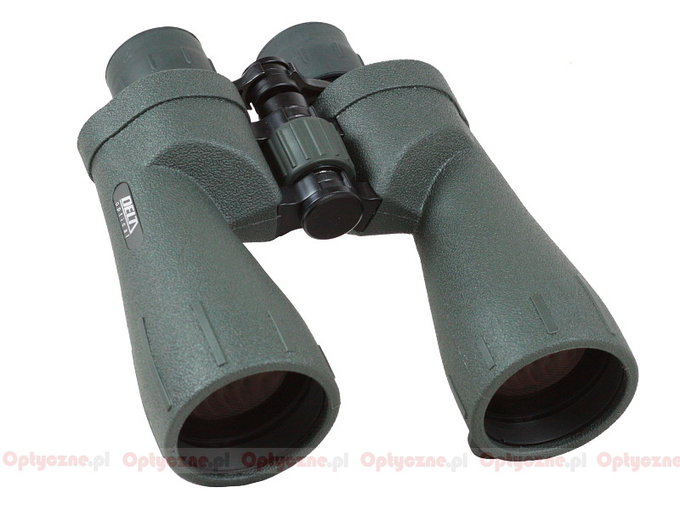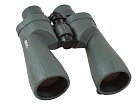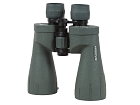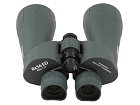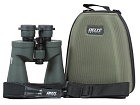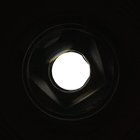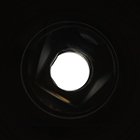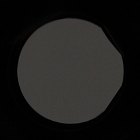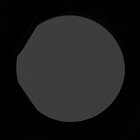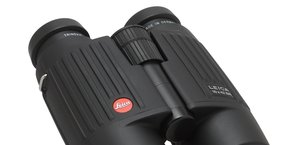Delta Optical Titanium 8x56 ED
In the following years the Delta Optical company decided to follow up that advantage. The Titanium series was enlarged by adding other porro-prism models with the following parameters: 9x63, 7x50 and 10x56. Now the time has come for another important change. More and more companies decide to introduce low-dispersion glass to their binoculars. Delta acted similarly and that’s why we have a new launch. We are also not surprised by the choice of the model. The success of the Titanium 8x56 makes us think that the new 8x56 ED, which is supposed to be even optically better, will find many satisfied users as well.
The Delta Optical Titanium 8x56 ED is a classic Porro-prism device with typical night parameters. According to the producers it will give us an excellent image quality for an affordable price. A simple but efficient Porro construction, BaK-4 glass prisms of good quality, high-end coatings ensuring 99.5% transmission level on one air-to-glass surface and about 93% for the whole instrument – these are its main advantages. Additionally everything was put into a solid aluminum casing which is waterproof and nitrogen-filled.
The buyer gets a set of caps, two straps, a cleaning cloth and a solid hard case included in box. This model comes with 5-year guarantee.
| Magnification | Lens diameter | Angular field of view | Prisms | Eye relief | Weight | Price |
|---|---|---|---|---|---|---|
| 8 | 56 | 126/1000(7.2o) | BaK-4/Porro | 17 mm | 1150 g | 1090 PLN |
Summary
Pros:
- good transmission,
- low chromatic aberration,
- well-corrected coma,
- negligible distortion,
- very wide field of view for this class of equipment,
- slight brightness loss at the edge of the field,
- very good whiteness rendition,
- good blackening inside the inner tubes,
- BaK-4 glass prisms,
- good quality of coatings,
- very good price/quality ratio.
Cons:
- truncated exit pupils,
- the ocular bridge could have been more stable and could have been made better,
- the magnification noticeably bigger than these declared 8x.
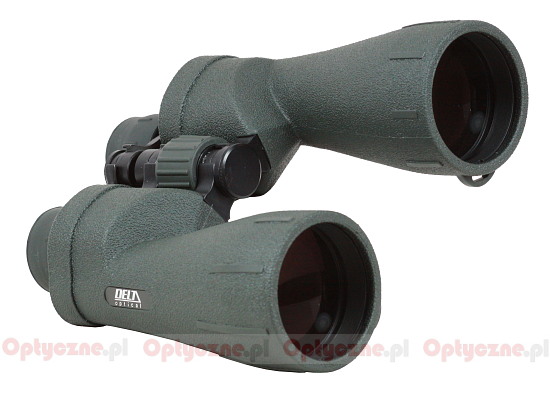 |
Already the first glance at the tested binoculars shows the first serious difference, when we compare it to the older 8x56 model; the change also eliminated one of the disadvantages we had pointed out earlier. We think here about the casing’s armour. In the old model we dealt with slippery rubber which hardly ensured you the appropriate grip. The Titanium 8x56 ED features a casing with rough texture which is definitely more comfortable to hold.
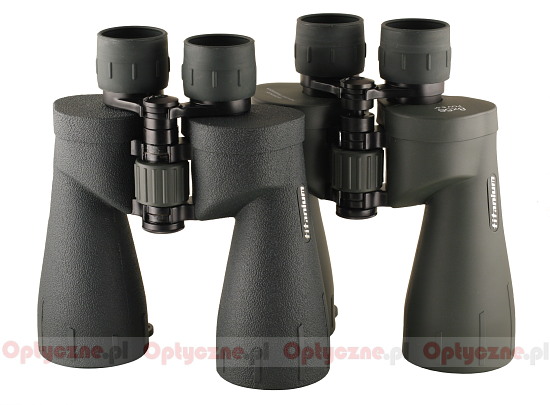 |
There are no other differences at first glance. When we take a closer look at both sets of binoculars, though, we can find several dissimilarities less conspicuous. First and the easiest to spot is the fact that the objectives in the ED model are deeper set in the casing. It is exactly one of the effects of using low-dispersion glass which most probably made the focal length of the whole instrument shorter. The casing itself could have been about 1 centimeter smaller. The producer didn’t decide to design a new casing, though, probably for financial reasons, and one and the same casing has been used in all 56 mm class binoculars.
The next visible difference is the changed hue of coatings. The ED model seems to reflect more red light and it might cause a lower transmission in that part of the spectrum. The green hue of coatings, characteristic for the Titanium series, which was responsible for a noticeable dip of the transmission graph in the middle of the visible spectrum, has disappeared. The prototype of the 8x56 model which we had an opportunity to hold earlier, had even different coatings; the currently produced specimen is supposed to feature additionally improved prism coatings. Let’s check the transmission graph of the tested binoculars, then.
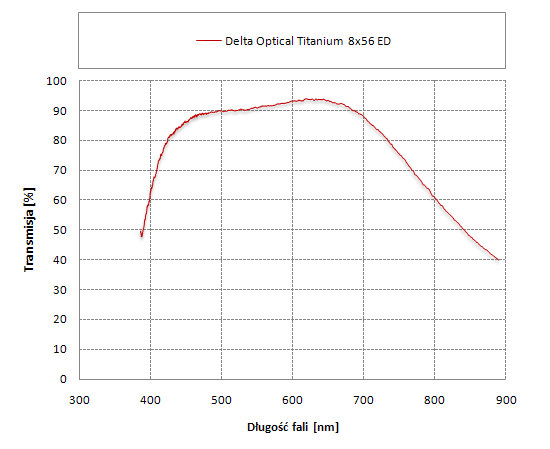 |
It is true that there is no green light dip and the average transmission beyond the middle of the visible spectrum reaches almost 91%. In the red part the situation is even better because we go up to the level of 93% there. For the blue colour the binoculars let pass less than 90% of light. Relatively small differences in transmission between the basic colours make the Delta’s 8x56 ED colour fidelity perfectly correct.
When we tested the 8x56 ED prototype two things caught our attention. Firstly the magnification of the new binoculars was closer to 8.5 than to 8 times; secondly the exit pupils were even more truncated than in the model without ED glass. The production specimen’s magnification is even bigger (at the level of 8.8x) and the pupils – even more truncated. The latter flaw is an effect of the huge field of view. The tested set of binoculars features not a 7.2-degree field of vision, as it is stated on its casing, but almost 7.4 degrees. It is the most wide-angle set of binoculars of the 8x56 class on the market. Even the Zeiss Victory 8x56 T|* FL known for its wide field, has it slightly narrower than the Delta – at the level of 7.3 degrees.
Does the magnification of 8.8 instead of 8 is a disadvantage? According to me – no; because of that the exit pupil is a tad smaller than 7 mm and the equipment a bit more all-purpose, not only when it comes to the range of usages but also the number of people who can use it. It is not an excuse for lack of accuracy by the producer, though. If Nikon can state that its Monarch 8.5x56 has 8.5 times magnification, the Delta could have done the same.
One and perhaps the most important thing is doubtless: the optical properties of the old Titanium 8x56 were good but in the 8x56 ED model they are even better! This set of binoculars corrects chromatic aberration and coma very well and when it comes to the distortion its performance is simply sensational. The huge field of view is quite sharp and not very dark at the edge. You would be hard-pressed to find an optical category in which the Titanium 8x56 ED achieves a weak result!
As we really express no reservations about the optics, quite the opposite in fact, we can only praise it, the mechanical side presents itself worse. The Delta looks as if it was produced in China and performs accordingly. Grease, squelching sounds while you focus, some slight hitches while moving the ocular bridge – all of this makes you annoyed. Because of that it would be unreasonable to think that the Titanium 8x56 ED can have the life span of 10 or 15 years. Fortunately the producer provides 5-year guarantee so we shouldn’t have any problems with this device during that period.
We must get real, though. The Delta tested here is optically brilliant. If it was mechanically brilliant too, it would cost far more than a bit over 300 Euro. On the other hand, as our market has matured enough to deal with the ED version, perhaps in the future a Premium ED version will hit the shelves too– optically as good as the 8x56 ED but mechanically better and certainly more expensive.




